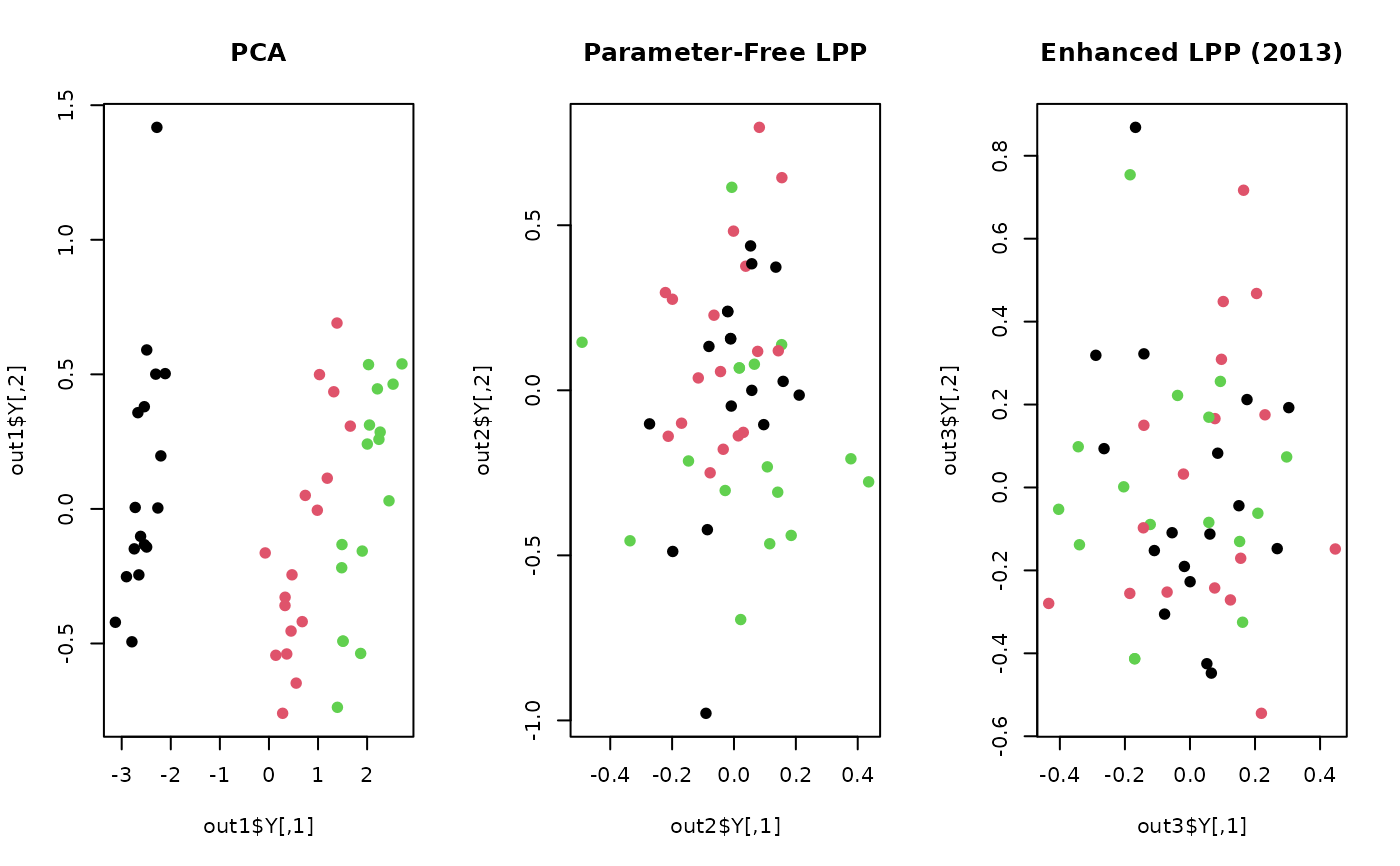Enhanced Locality Preserving Projection proposed in 2013 (ELPP2) is built upon a parameter-free philosophy from PFLPP. It further aims to exclude its projection to be uncorrelated in the sense that the scatter matrix is placed in a generalized eigenvalue problem.
do.elpp2(
X,
ndim = 2,
preprocess = c("center", "scale", "cscale", "decorrelate", "whiten")
)Arguments
- X
an \((n\times p)\) matrix or data frame whose rows are observations
- ndim
an integer-valued target dimension.
- preprocess
an additional option for preprocessing the data. Default is "center". See also
aux.preprocessfor more details.
Value
a named list containing
- Y
an \((n\times ndim)\) matrix whose rows are embedded observations.
- projection
a \((p\times ndim)\) whose columns are basis for projection.
- trfinfo
a list containing information for out-of-sample prediction.
References
Dornaika F, Assoum A (2013). “Enhanced and Parameterless Locality Preserving Projections for Face Recognition.” Neurocomputing, 99, 448--457.
See also
Examples
## use iris data
data(iris)
set.seed(100)
subid = sample(1:150,50)
X = as.matrix(iris[subid,1:4])
lab = as.factor(iris[subid,5])
## compare with PCA and PFLPP
out1 = do.pca(X, ndim=2)
out2 = do.pflpp(X, ndim=2)
out3 = do.elpp2(X, ndim=2)
## visualize
opar <- par(no.readonly=TRUE)
par(mfrow=c(1,3))
plot(out1$Y, pch=19, col=lab, main="PCA")
plot(out2$Y, pch=19, col=lab, main="Parameter-Free LPP")
plot(out3$Y, pch=19, col=lab, main="Enhanced LPP (2013)")
 par(opar)
par(opar)